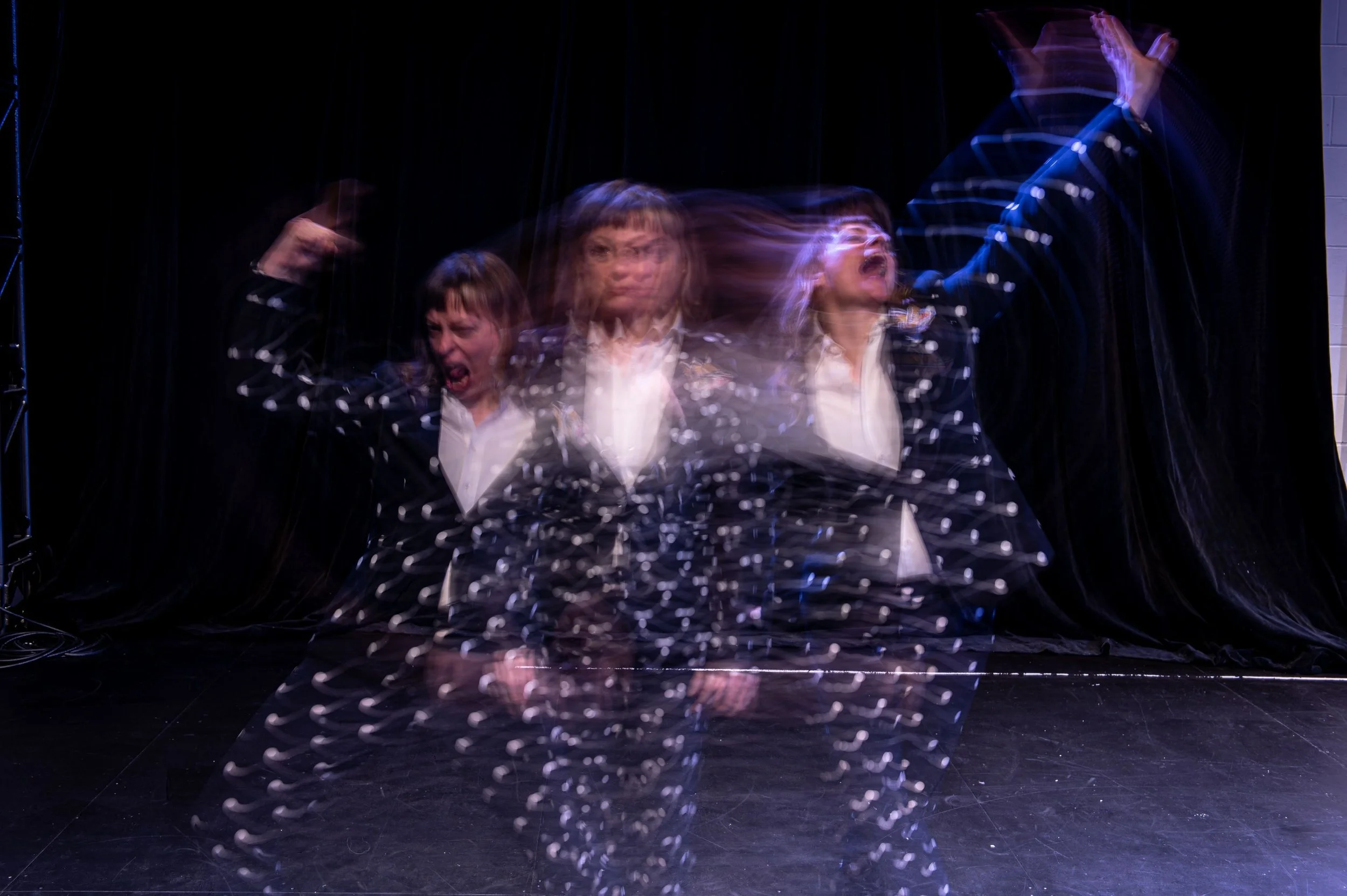Tara Cheyenne Friedenberg explores gender identity in PANTS
The dancer-actor-comedian employs movement and a fierce sense of humour to get at serious subjects
PANTS. Photo by Wendy D Photography
Firehall Arts Centre presents PANTS from January 17 to 20 at 7:30 pm; post-show talkback takes place January 18
“WHO WEARS THE pants in the family?” It’s this kind of outdated expression that amuses and riles veteran Vancouver artist Tara Cheyenne Friedenberg. At age 51 with a 12-year-old child who identifies as nonbinary, the triple-threat dancer-actor-comedian has been thinking a lot about gender lately. While Friedenberg goes by she/her, she often portrays male characters and performs in drag, so there are times, she says, when he/him would be apt.
“Had I had grown up in a different time, I wonder if I would have identified differently,” Friedenberg says in an interview with Stir. “When I say ‘she/her’, I need a caveat around that. I have my way of identifying in the feminine in a way that is fairly masculine.”
Friedenberg explores gender identity in PANTS, her new autobiographical solo about to have its world premiere at the Firehall Arts Centre.
The creative process started well before the pandemic, when the multidisciplinary artist began interviewing people, a technique she has employed across her body of work. She spoke with about 25 individuals who identify as queer, trans, masculine, feminine, nonbinary, and more to get their thoughts on language and gender.
“What became really interesting, even though there was great diversity in how people identified and expressed themselves, there were a lot of similarities,” she says. “To oversimplify and boil it right down, how can it be that there’s a pink box and a blue box and that’s it? Because of course that isn’t the case. Then what is our experience growing up, being kids, being adolescents, being adults, then being parents and trying to navigate all this? And learning from the younger folks about the importance of an ongoing questioning of these cultural stereotypes, of these ideas that are, in my opinion—and I’m not alone—made up. There are dozens of different gender expressions; there isn’t two. It’s politics. It’s how we control people.”
Don’t get her started on things like gender reveal parties with pink or blue balloons. In fact, pink used to be considered a “boy” colour prior to the 20th century. In PANTS, Friedenberg delivers her signature mashup of dance, theatre, and comedy. Hers is not an easily categorizable art form.
“One presenter said it best when they said it’s stand-up comedy with dance breaks,” Friedenberg says. “I’m talking to the audience in a very stand-up way for part of the piece. I’m digging into my dance practice in a way that is really about my aging body, trying to honour where my body’s at and also push it, and using the language of movement to say the things that words can’t do justice to. I’m digging into that as much as I can.”
Friedenberg selected the title because of how much symbolism is associated with “pants” and the way the term is used in various ways across cultures. “I quite like it; the word means so many different things,” she says. “I love that for our friends in the U.K., pants means underwear; I love things like ‘Who wears the pants in the family’ or ‘Put on your big girl pants’. In Scotland, if you say ‘that’s pants’, it means something that’s kind of rubbish. I find it a kind of funny word.
“My mom talks about working as a server when she was in university and she was not allowed to wear pants, so there’s that whole thing about who’s allowed to wear pants and who’s not allowed, and who’s not allowed to wear a skirt. It’s just funny that delineating the space between the legs with a garment is so charged and so loaded.”
The same can be said of gender itself, when there are people opposed to sexual orientation and gender identity (SOGI) in schools. Friedenberg may have a wicked sense of humour, but she’s using her work to get at serious subjects.
“I think it’s important that no matter how you identify—if you’re comfortable with the binary—for all of us to really appreciate the scope and the gorgeous gradation and not leave that work to trans folks or people who express in a so-called ‘nontypical’ way,” she says. “It’s all of our jobs to look at it. It’s ludicrous what we determine ‘this is absolutely male’ and ‘this is absolutely female.’ When you zoom in, the work is about gender in all its absurdity.”













